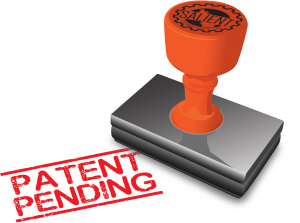Here at Salient, we’ve designed many products that have jumped into the world of patent protection. The patent process is a structured path that is ideally approached with best practices.
For those best practices, we often turn to Antoinette (Toni) M. Tease, a registered patent attorney who we have worked with and trusted for years. Here is a look into one of her Intellections® newsletters…
Starting the Patent Process, By Antoinette M. Tease
Intellectual Property and Technology Law
The first two issues I address with every new patent client who contacts me are ownership and disclosure. Before you proceed with the patent process, you need to make sure you own the patent rights to the invention, and you also need to make sure that your invention is not in the public domain due to previous public disclosures, offers for sale, public use, etc…
To begin the patent process, we require three things of inventors: 1) a signed engagement letter, 2) a completed disclosure form, and 3) a retainer for the patent search. A prototype is not required for the patent search, but it is highly recommended because it will enable the search firm to focus more specifically on those structural aspects of your invention that are potentially patentable.
There are limitations to any patent search, four of which are mentioned here:
- Most patent applications are published 18 months after filing, and applications filed with a nonpublication request are not published until the patent issues. This means that the patent search will not include any applications filed in the 18 months prior to the search.
- A typical patent search will include U.S. patent references only; foreign searches may be conducted, but they are quite costly. Foreign patent references may be cited by the examiner, however, in reviewing your application.
- A typical patent search includes patent references (issued patents and published patent applications only). Other types of publications (such as articles) are also considered prior art but are not typically included in a patent search.
- There are issues with the patent office’s classification system (classifications are not always consistent or accurate) that sometimes result in a reference not being included in a patent search that was conducted according to the most relevant search classes and subclasses.
For all these reasons, I tell inventors to consider the patent search a “snapshot” of the prior art but not to treat it as a guarantee of patentability.
Once the search is completed, we provide our best assessment as to the chances of patentability. If the client decides to move forward, then we usually file a nonprovisional patent application….
Read the rest of the story HERE.
Stay tuned for an upcoming video interview series on the Patent Process with Toni Tease…

